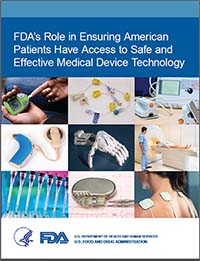The FDA is eager to show improvement of a performance self-assessment which revealed “a steady decline” of its premarket medical device approval program between 2000 and 2010.
In a recent report on policies and initiatives, the FDA device arm (CDRH) claims it approves medical devices much faster than five years ago. The Agency also outlines new initiatives related to medical device approval.
What does that mean for medical device manufacturers? Medical devices are getting to the US market faster, saving companies time and money.

The FDA reports that four of its device submission processes have reduced time to decision:
-
- 510(k)s: From 132 days in 2010, lowered 13 percent to 115 days in 2014
- PMAs: From 352 days in 2009, lowered 31 percent to 242 days in 2014
- IDEs: From 442 days, decreased by over a year to 30 days in 2015
- De novo requests: From 992 days in 2010, lowered to 300 days in 2014
Another improvement the Agency reports is in the percentage of approved and pending applications:
-
- The percentage of approved 510(k)s rose from 73 percent in 2010 to 84 percent in 2014,
- Pending submissions for 510(k)s decreased by 30 percent
- The percentage of cleared PMAs jumped from 59 percent in 2010 to 86 percent in 2014.
- Pending PMA submissions decreased by 43 percent.
In addition, key changes to the FDA medical device approval process were implemented that speed up the process of bringing medical devices to the patient:
-
- Streamlining clinical trials program encourages use of innovative methodologies, study designs, and early feasibility studies
- Recalibrating the benefit-risk framework in premarket reviews of high-risk devices to include patient input
- Introducing the Expedited Access Pathway Program for devices intended for patients with life-threatening conditions whose needs are unmet by current technology
- Implementing the Medical Device Development Tools (MDDT) program to support premarket applications with shorter clinical trials
- Proposing a National Medical Device Surveillance System (MDS), which requires manufacturers to label devices with unique device identification (UDI) markers
- Reviewing patient registries to gather “real-world” data after devices are marketed
- Increasing communication with sponsors
All this is very promising for the future. I am curious to see how FDA performs in the next couple of years.
My personal experience in working with the FDA is very positive and I think they are making changes in the right direction to bring new medical devices to patients faster. I would love to hear from readers regarding their personal experiences.
Virginia Anastassova, RAC, is a former Regulatory Manager at StarFish Medical. She brings extensive experience in quality management and regulatory affairs to our clients.
Images: StarFish Medical